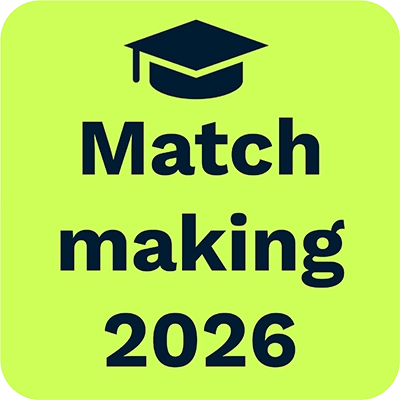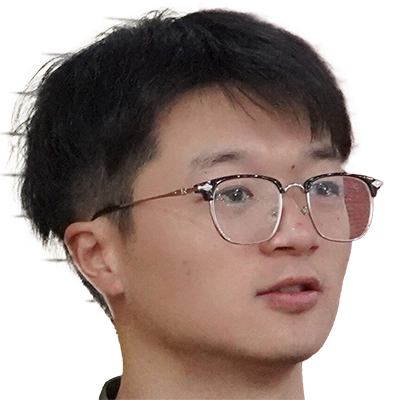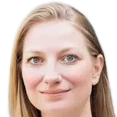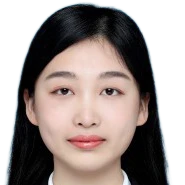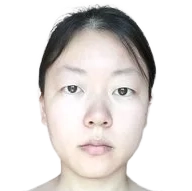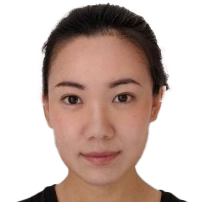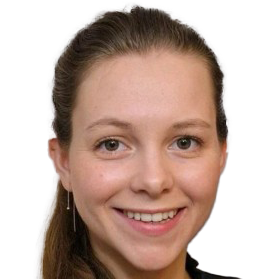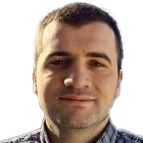Research Group Xiaoxiang Zhu
Xiaoxiang Zhu
is Professor of Data Science in Earth Observation at TU Munich.
Her research focuses on signal processing and data science in earth observation. Geoinformation derived from Earth observation satellite data is indispensable for many scientific, governmental and planning tasks. Furthermore, Earth observation has arrived in the Big Data era with ESA’s Sentinel satellites and NewSpace companies. Professor Zhu develops explorative signal processing and machine learning algorithms, such as compressive sensing and deep learning, to improve information retrieval from remote sensing data, and to enable breakthroughs in geoscientific and environmental research. In particular, by the fusion of petabytes of EO data from satellite to social media, she aims at tackling challenges such as mapping of global urbanization.
Team members @MCML
PostDocs
PhD Students
Recent News @MCML
Publications @MCML
2026
Towards Unified Vision Language Models for Forest Ecological Analysis in Earth Observation.
AI4ES @AAAI 2026 - Workshop on AI for Environmental Science at the 40th Conference on Artificial Intelligence. Singapore, Jan 20-27, 2026. To be published. Preprint available. arXiv GitHub
Enhancing the Understanding of Urban Green Space Cooling Effects in China's Major Cities with a Sub-Meter Dataset.
Sustainable Cities and Society 136.107051. Jan. 2026. DOI
2025
GlobalBuildingAtlas: an open global and complete dataset of building polygons, heights and LoD1 3D models.
Earth System Science Data 17.12. Dec. 2025. DOI GitHub
Uncertainty aware slum mapping in 55 heterogeneous cities.
International Journal of Applied Earth Observation and Geoinformation 145.104979. Dec. 2025. DOI
Unsupervised Detection of Building Destruction during War from Publicly Available Radar Satellite Imagery.
PNAS Nexus 4.12. Dec. 2025. DOI
On the strategy of exploring spatio-temporal information from Earth observation data for crop yield prediction.
Smart Agricultural Technology 12.101540. Dec. 2025. DOI
Hierarchical Graph Networks for Forecasting Terrestrial Water Storage Anomalies.
ML4PS @NeurIPS 2025 - Workshop on Machine Learning and the Physical Sciences at the 39th Conference on Neural Information Processing Systems. San Diego, CA, USA, Nov 30-Dec 07, 2025. PDF
Learning Generalizable Shape Completion with SIM(3) Equivariance.
NeurIPS 2025 - 39th Conference on Neural Information Processing Systems. San Diego, CA, USA, Nov 30-Dec 07, 2025. To be published. Preprint available. URL
A Spatio-Temporal Dataset for Satellite-Based Landslide Detection.
Scientific Data 12.1772. Nov. 2025. DOI
TSE-Net: Semi-supervised Monocular Height Estimation from Single Remote Sensing Images.
Preprint (Nov. 2025). arXiv GitHub
Hierarchical Semi-Supervised Active Learning for Remote Sensing.
Preprint (Nov. 2025). arXiv
LandSegmenter: Towards a Flexible Foundation Model for Land Use and Land Cover Mapping.
Preprint (Nov. 2025). arXiv
GlobalGeoTree: A Multi-Granular Vision-Language Dataset for Global Tree Species Classification.
Preprint (Nov. 2025). DOI
GEWDiff: Geometric Enhanced Wavelet-based Diffusion Model for Hyperspectral Image Super-resolution.
Preprint (Nov. 2025). arXiv
On the Generalization of Representation Uncertainty in Earth Observation.
ICCV 2025 - IEEE/CVF International Conference on Computer Vision. Honolulu, Hawai’i, Oct 19-23, 2025. To be published. Preprint available. arXiv GitHub
Towards a Unified Copernicus Foundation Model for Earth Vision.
ICCV 2025 - IEEE/CVF International Conference on Computer Vision. Honolulu, Hawai’i, Oct 19-23, 2025. To be published. Preprint available. arXiv GitHub
Human-in-the-loop: Towards label embeddings for assessing classification difficulty.
Statistical Modelling Early Access. Oct. 2025. DOI
Adaptive Gradient Calibration for Single-Positive Multi-Label Learning in Remote Sensing Image Scene Classification.
Preprint (Oct. 2025). arXiv
Physically consistent and uncertainty-aware learning of spatiotemporal dynamics.
Preprint (Oct. 2025). arXiv
Regression in Earth Observation: Are vision–language models up to the challenge?
IEEE Geoscience and Remote Sensing Magazine Early Access. Sep. 2025. DOI GitHub
LHRS-Bot-Nova: Improved Multimodal Large Language Model for Remote Sensing Vision-Language Interpretation.
ISPRS Journal of Photogrammetry and Remote Sensing 227. Sep. 2025. DOI GitHub
RSCLIP for Training-Free Open-Vocabulary Remote Sensing Image Semantic Segmentation.
Preprint (Sep. 2025). DOI GitHub
Terragon: A Unified Framework for Earth Observation Data Cube Generation.
The Journal of Open Source Software 10.114. Aug. 2025. DOI
Parametric Point Cloud Completion for Polygonal Surface Reconstruction.
CVPR 2025 - IEEE/CVF Conference on Computer Vision and Pattern Recognition. Nashville, TN, USA, Jun 11-15, 2025. DOI GitHub
Panopticon: Advancing Any-Sensor Foundation Models for Earth Observation.
EARTHVISION @CVPR 2025 - Workshop EarthVision: Large Scale Computer Vision for Remote Sensing Imagery at IEEE/CVF Conference on Computer Vision and Pattern Recognition. Nashville, TN, USA, Jun 11-15, 2025. DOI
Deep Learning-Based GNSS-R Global Vegetation Water Content: Dataset, Estimation, and Uncertainty.
IEEE Journal of Selected Topics in Applied Earth Observations and Remote Sensing Early Access. Jun. 2025. DOI
Soil organic carbon estimation using spaceborne hyperspectral composites on a large scale.
International Journal of Applied Earth Observation and Geoinformation 140. Jun. 2025. DOI
Urban Flood Modeling and Forecasting with Deep Neural Operator and Transfer Learning.
Journal of Hydrology In Press, Journal Pre-proof.133705. Jun. 2025. DOI
Enhancing Monocular Height Estimation via Weak Supervision from Imperfect Labels.
Preprint (Jun. 2025). arXiv GitHub
Causal Graph Neural Networks for Robust Wildfire Forecasting Across Geographic Shifts.
Preprint (Jun. 2025). DOI
Can Uncertainty Quantification Benefit From Label Embeddings? A Case Study on Local Climate Zone Classification.
IEEE Transactions on Geoscience and Remote Sensing 63. May. 2025. DOI
Weak-strong Graph Contrastive Learning Neural Network for Hyperspectral Image Classification.
IEEE Transactions on Geoscience and Remote Sensing Early Access. May. 2025. DOI GitHub
RainScaler: A Physics-inspired Network for Precipitation Correction and Downscaling.
IEEE Transactions on Geoscience and Remote Sensing Early Access. May. 2025. DOI GitHub
BANet: A bilateral attention network for extracting changed buildings between remote sensing imagery and cadastral maps.
International Journal of Applied Earth Observation and Geoinformation 139.104486. May. 2025. DOI
National-scale tree species mapping with deep learning reveals forest management insights in Germany.
International Journal of Applied Earth Observation and Geoinformation 139.104522. May. 2025. DOI
Global Collinearity-aware Polygonizer for Polygonal Building Mapping in Remote Sensing.
Preprint (May. 2025). arXiv GitHub
ExEBench: Benchmarking Foundation Models on Extreme Earth Events.
Preprint (May. 2025). arXiv GitHub
The complex connection between flood risk and malaria dynamics in Sub-Saharan Africa.
EGU 2025 - General Assembly of the European Geosciences Union. Vienna, Austria, Apr 27-May 02, 2025. DOI
Generating Synthetic Oracle Datasets to Analyze Noise Impact: A Study on Building Function Classification Using Tweets.
ECIR 2025 - 47th European Conference on Information Retrieval. Lucca, Italy, Apr 06-10, 2025. PDF
Identification of the potential for roof greening using remote sensing and deep learning.
Cities 159.105782. Apr. 2025. DOI
ChatEarthNet: a global-scale image–text dataset empowering vision–language geo-foundation models.
Earth System Science Data 17.3. Mar. 2025. DOI
SHAZAM: Self-Supervised Change Monitoring for Hazard Detection and Mapping.
IEEE Journal of Selected Topics in Applied Earth Observations and Remote Sensing Early Access. Mar. 2025. DOI GitHub
CromSS: Cross-Modal Pretraining With Noisy Labels for Remote Sensing Image Segmentation.
IEEE Transactions on Geoscience and Remote Sensing 63. Mar. 2025. DOI GitHub
FloodCastBench: A Large-Scale Dataset and Foundation Models for Flood Modeling and Forecasting.
Scientific Data 12.431. Mar. 2025. DOI
i-WiViG: Interpretable Window Vision GNN.
Preprint (Mar. 2025). arXiv
MPTSNet: Integrating Multiscale Periodic Local Patterns and Global Dependencies for Multivariate Time Series Classification.
AAAI 2025 - 39th Conference on Artificial Intelligence. Philadelphia, PA, USA, Feb 25-Mar 04, 2025. DOI
Global high categorical resolution land cover mapping via weak supervision.
ISPRS Journal of Photogrammetry and Remote Sensing 220. Feb. 2025. DOI GitHub
Physics-aware machine learning for glacier ice thickness estimation: a case study for Svalbard.
The Cryosphere 19.2. Feb. 2025. DOI
GAIA: A Global, Multi-modal, Multi-scale Vision-Language Dataset for Remote Sensing Image Analysis.
Preprint (Feb. 2025). arXiv
Semi-Supervised Building Footprint Extraction Using Debiased Pseudo-Labels.
IEEE Transactions on Geoscience and Remote Sensing 63. Jan. 2025. DOI GitHub
Hybrid Quantum Deep Learning With Superpixel Encoding for Earth Observation Data Classification.
IEEE Transactions on Neural Networks and Learning Systems Early Access. Jan. 2025. DOI URL
Pervasive glacier retreats across Svalbard from 1985 to 2023.
Nature Communications 16.705. Jan. 2025. DOI
2024
Volcanic Deformation Monitoring utilizing Deep Learning and Wavelet Transform.
AGU 2024 - American Geophysical Union Annual Meeting. Washington D.C., USA, Dec 09-13, 2024. URL
Opening the Black Box: A systematic review on explainable artificial intelligence in remote sensing.
IEEE Geoscience and Remote Sensing Magazine 12.4. Dec. 2024. DOI
Beyond Grid Data: Exploring graph neural networks for Earth observation.
IEEE Geoscience and Remote Sensing Magazine Early Access. Dec. 2024. DOI
PolyGNN: Polyhedron-based graph neural network for 3D building reconstruction from point clouds.
ISPRS Journal of Photogrammetry and Remote Sensing 218.A. Dec. 2024. DOI GitHub
How Certain are Uncertainty Estimates? Three Novel Earth Observation Datasets for Benchmarking Uncertainty Quantification in Machine Learning.
Preprint (Dec. 2024). arXiv GitHub
REO-VLM: Transforming VLM to Meet Regression Challenges in Earth Observation.
Preprint (Dec. 2024). arXiv
Deep learning-based framework for city-scale rooftop solar potential estimation by considering roof superstructures.
Applied Energy 374.123839. Nov. 2024. DOI
Feature Guided Masked Autoencoder for Self-Supervised Learning in Remote Sensing.
IEEE Journal of Selected Topics in Applied Earth Observations and Remote Sensing 18. Nov. 2024. DOI
Attention-ConvNet Network for Ocean-Front Prediction via Remote Sensing SST Images.
IEEE Transactions on Geoscience and Remote Sensing 62. Nov. 2024. DOI GitHub
MineNetCD: A Benchmark for Global Mining Change Detection on Remote Sensing Imagery.
IEEE Transactions on Geoscience and Remote Sensing 62. Nov. 2024. DOI
EarthNets: Empowering artificial intelligence for Earth observation.
IEEE Geoscience and Remote Sensing Magazine Early Access. Oct. 2024. DOI GitHub
Multilabel-Guided Soft Contrastive Learning for Efficient Earth Observation Pretraining.
IEEE Transactions on Geoscience and Remote Sensing 62. Oct. 2024. DOI GitHub
Large-scale flood modeling and forecasting with FloodCast.
Water Research 264. Oct. 2024. DOI
Representation Enhancement-Stabilization: Reducing Bias-Variance of Domain Generalization.
ECCV 2024 - 18th European Conference on Computer Vision. Milano, Italy, Sep 29-Oct 04, 2024. DOI GitHub
Decoupling Common and Unique Representations for Multimodal Self-supervised Learning.
ECCV 2024 - 18th European Conference on Computer Vision. Milano, Italy, Sep 29-Oct 04, 2024. DOI GitHub
PixelDINO: Semi-Supervised Semantic Segmentation for Detecting Permafrost Disturbances in the Arctic.
IEEE Transactions on Geoscience and Remote Sensing 62. Aug. 2024. DOI
CloudSeg: A multi-modal learning framework for robust land cover mapping under cloudy conditions.
ISPRS Journal of Photogrammetry and Remote Sensing 214. Aug. 2024. DOI GitHub
A satellite imagery-driven framework for rapid resource allocation in flood scenarios to enhance loss and damage fund effectiveness.
Scientific Reports 14.19290. Aug. 2024. DOI
Land Cover Classification From Sentinel-2 Images With Quantum-Classical Convolutional Neural Networks.
IEEE Journal of Selected Topics in Applied Earth Observations and Remote Sensing 17. Jul. 2024. DOI
Self-Supervised Pretraining With Monocular Height Estimation for Semantic Segmentation.
IEEE Transactions on Geoscience and Remote Sensing 62. Jul. 2024. DOI
MaskCD: A Remote Sensing Change Detection Network Based on Mask Classification.
IEEE Transactions on Geoscience and Remote Sensing 62. Jul. 2024. DOI GitHub
Urban Land Cover Classification with Efficient Hybrid Quantum Machine Learning Model.
CEC 2024 - IEEE Congress on Evolutionary Computation. Yokohama, Japan, Jun 30-Jul 05, 2024. DOI
Recent Trends Challenges and Limitations of Explainable AI in Remote Sensing.
Workshop @CVPR 2024 - Workshop at the IEEE/CVF Conference on Computer Vision and Pattern Recognition. Seattle, WA, USA, Jun 17-21, 2024. URL
Contrastive Pretraining for Visual Concept Explanations of Socioeconomic Outcomes.
Workshop @CVPR 2024 - Workshop at the IEEE/CVF Conference on Computer Vision and Pattern Recognition. Seattle, WA, USA, Jun 17-21, 2024. DOI
Task Specific Pretraining with Noisy Labels for Remote sensing Image Segmentation.
IGARSS 2024 - IEEE International Geoscience and Remote Sensing Symposium. Athens, Greece, Jun 07, 2024-12, 2023. DOI
Referring Image Segmentation for Remote Sensing Data.
IGARSS 2024 - IEEE International Geoscience and Remote Sensing Symposium. Athens, Greece, Jun 07, 2024-12, 2023. DOI
Deep-Learning-Based Large-Scale Forest Height Generation.
IGARSS 2024 - IEEE International Geoscience and Remote Sensing Symposium. Athens, Greece, Jun 07, 2024-12, 2023. DOI
Vision-Language Models in Remote Sensing: Current progress and future trends.
IEEE Geoscience and Remote Sensing Magazine 12.2. Jun. 2024. DOI
Continent-wide urban tree canopy fine-scale mapping and coverage assessment in South America with high-resolution satellite images.
ISPRS Journal of Photogrammetry and Remote Sensing 212. Jun. 2024. DOI
Decouple and weight semi-supervised semantic segmentation of remote sensing images.
ISPRS Journal of Photogrammetry and Remote Sensing 212. Jun. 2024. DOI GitHub
CromSS: Cross-modal pre-training with noisy labels for remote sensing image segmentation.
ML4RS @ICLR 2024 - 2nd Workshop Machine Learning for Remote Sensing at the 12th International Conference on Learning Representations. Vienna, Austria, May 07-11, 2024. PDF
Causal Graph Neural Networks for Wildfire Danger Prediction.
ML4RS @ICLR 2024 - 2nd Workshop Machine Learning for Remote Sensing at the 12th International Conference on Learning Representations. Vienna, Austria, May 07-11, 2024. PDF
Human-in-the-loop: Towards Label Embeddings for Measuring Classification Difficulty.
Preprint (May. 2024). arXiv
On the Foundations of Earth and Climate Foundation Models.
Preprint (May. 2024). arXiv
Rapid unsupervised economic assessment of urban flood damage using SAR images.
EGU 2024 - General Assembly of the European Geosciences Union. Vienna, Austria, Apr 14-19, 2024. DOI
A spectral-spatial-temporal attention network for tree species mapping using DESIS hyperspectral imagery.
EGU 2024 - General Assembly of the European Geosciences Union. Vienna, Austria, Apr 14-19, 2024. DOI
Can Land Cover Classification Models Benefit From Distance-Aware Architectures?
IEEE Geoscience and Remote Sensing Magazine 21. Apr. 2024. DOI GitHub
HyperLISTA-ABT: An Ultralight Unfolded Network for Accurate Multicomponent Differential Tomographic SAR Inversion.
IEEE Transactions on Geoscience and Remote Sensing 62. Apr. 2024. DOI
Interpretable deep learning for consistent large-scale urban population estimation using Earth observation data.
International Journal of Applied Earth Observation and Geoinformation 128. Apr. 2024. DOI
High-resolution satellite images reveal the prevalent positive indirect impact of urbanization on urban tree canopy coverage in South America.
Landscape and Urban Planning 247. Apr. 2024. DOI
Nationwide Tree Species Mapping in Germany with Forestformer: Assessing Forest Resilience and Unveiling Distribution Patterns.
Preprint (Apr. 2024). DOI
EarthNets: Empowering AI in Earth Observation.
Preprint (Apr. 2024). arXiv GitHub
GlobalBuildingMap -- Unveiling the Mystery of Global Buildings.
Preprint (Apr. 2024). arXiv
A Review of Building Extraction From Remote Sensing Imagery: Geometrical Structures and Semantic Attributes.
IEEE Transactions on Geoscience and Remote Sensing 62. Mar. 2024. DOI
RRSIS: Referring Remote Sensing Image Segmentation.
IEEE Transactions on Geoscience and Remote Sensing 62. Mar. 2024. DOI GitHub
Neural Plasticity-Inspired Multimodal Foundation Model for Earth Observation.
Preprint (Mar. 2024). arXiv
A high-resolution calving front data product for marine-terminating glaciers in Svalbard.
Earth System Science Data 16.2. Feb. 2024. DOI
Multimodal Co-Learning for Building Change Detection: A Domain Adaptation Framework Using VHR Images and Digital Surface Models.
IEEE Transactions on Geoscience and Remote Sensing 62. Feb. 2024. DOI
Few-Shot Object Detection in Remote Sensing: Lifting the Curse of Incompletely Annotated Novel Objects.
IEEE Transactions on Geoscience and Remote Sensing 62. Jan. 2024. DOI GitHub
2023
MedSat: A Public Health Dataset for England Featuring Medical Prescriptions and Satellite Imagery.
NeurIPS 2023 - 37th Conference on Neural Information Processing Systems. New Orleans, LA, USA, Dec 10-16, 2023. URL
Multimodal and Multiresolution Data Fusion for High-Resolution Cloud Removal: A Novel Baseline and Benchmark.
IEEE Transactions on Geoscience and Remote Sensing 62. Dec. 2023. DOI GitHub
Hybrid Quantum-Classical Convolutional Neural Network Model for Image Classification.
IEEE Transactions on Neural Networks and Learning Systems 35.12. Dec. 2023. DOI URL
Deep Learning for Subtle Volcanic Deformation Detection With InSAR Data in Central Volcanic Zone.
IEEE Transactions on Geoscience and Remote Sensing 61. Oct. 2023. DOI
HTC-DC Net: Monocular Height Estimation From Single Remote Sensing Images.
IEEE Transactions on Geoscience and Remote Sensing 61. Oct. 2023. DOI GitHub
Adaptive Morphology Filter: A Lightweight Module for Deep Hyperspectral Image Classification.
IEEE Transactions on Geoscience and Remote Sensing 61. Oct. 2023. DOI GitHub
Physics-aware Machine Learning Revolutionizes Scientific Paradigm for Machine Learning and Process-based Hydrology.
Preprint (Oct. 2023). arXiv GitHub
2022
Exploring Self-Attention for Crop-type Classification Explainability.
Preprint (Oct. 2022). arXiv
©all images: LMU | TUM

